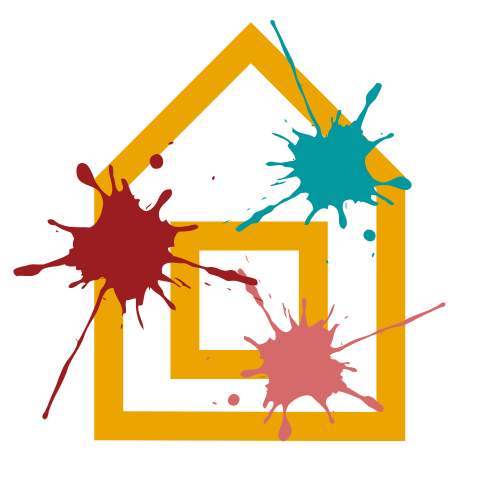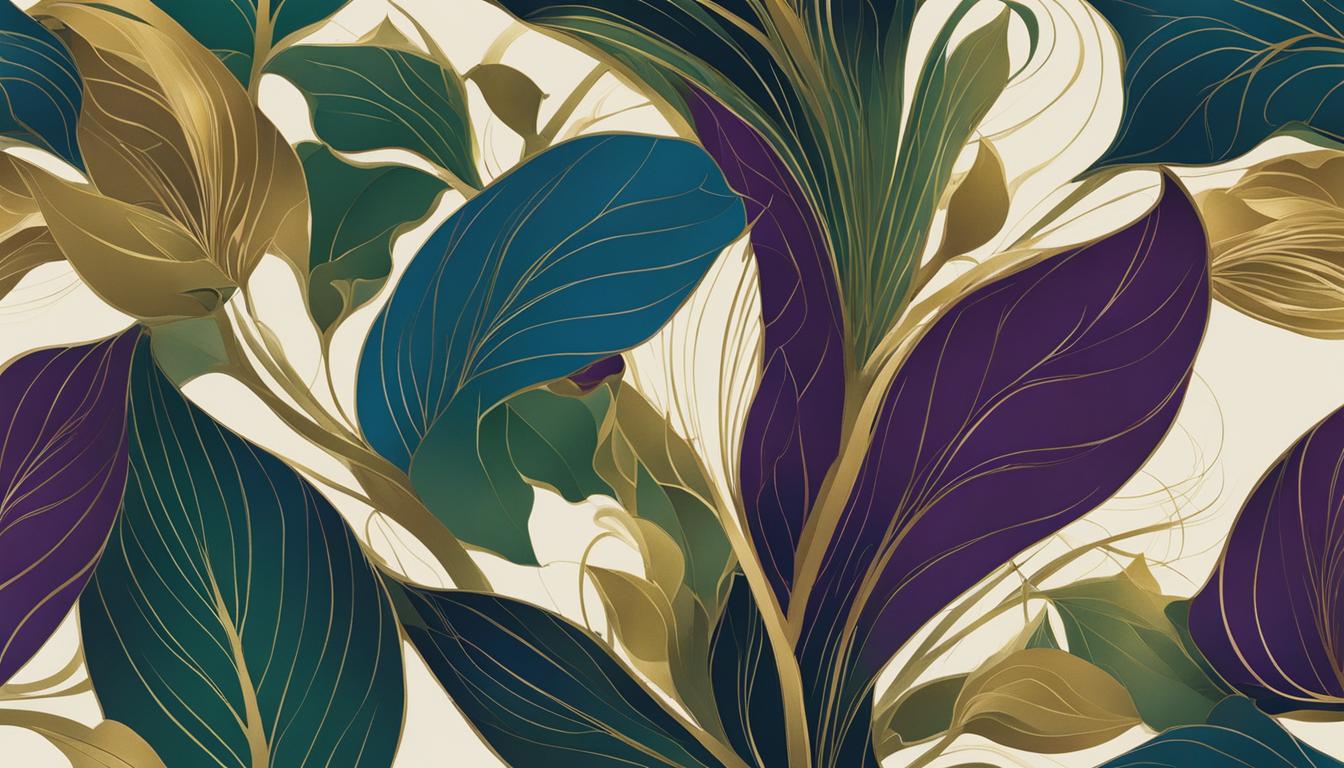Welcome to our exploration of the captivating world of Art Nouveau. In this series, we will dive into the mesmerizing Art Nouveau style, its influential artists, and the enduring impact it has had on design and architecture. Join us as we uncover the history, characteristics, and inspiration behind this remarkable movement.
The Art Nouveau movement emerged in the late 19th century as a response to industrialization. It sought to bring art into every aspect of life, from architecture to interior design. Characterized by organic forms, intricate details, and flowing lines, Art Nouveau design cherishes the beauty of nature.
Leading architects and artists like Victor Horta, Hector Guimard, and Alphonse Mucha were instrumental in shaping the Art Nouveau movement. Their innovative creations continue to inspire designers and architects around the world today.
Art Nouveau’s influence extends beyond architecture and design, impacting various art forms, including painting, graphic design, fashion, and decorative arts. Its natural motifs and elegance captivate enthusiasts and artists alike, even after more than a century.
Stay tuned as we delve deeper into the origins, colors and materials, furniture and fixtures, accessories and décor, and applying Art Nouveau design principles to different rooms. Discover how to incorporate the beauty of nature into your living spaces with the timeless allure of Art Nouveau design.
The Origins of Art Nouveau Design
Art Nouveau design emerged as a reaction against the mechanistic influence of the industrial revolution on the art world. It aimed to blur the lines between fine arts and decorative arts, bringing art into all aspects of life, including architecture and interior design. The Art Nouveau movement sought to create harmonious environments inspired by nature, emphasizing organic forms, flowing lines, and intricate details.
At its core, Art Nouveau design valued craftsmanship and the use of handmade items over mass-produced goods. This emphasis on skilled craftsmanship gave the style its unique charm and elegance. Art Nouveau quickly spread across Europe and the United States, leaving a significant impact on the design world.
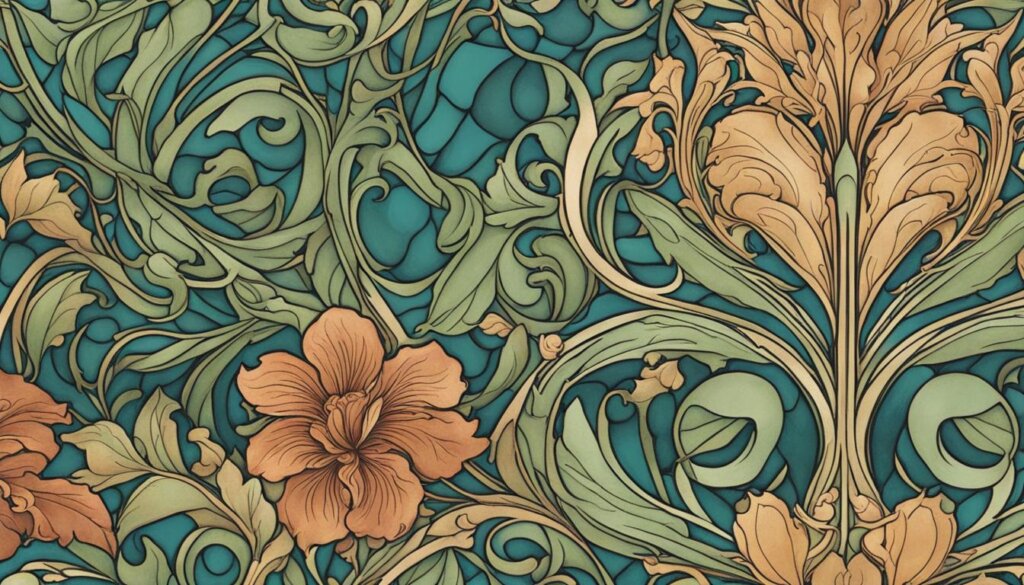
- Art Nouveau design emerged as a reaction against the industrial revolution
- It aimed to blur the lines between fine arts and decorative arts
- The movement sought to create harmonious environments inspired by nature
- Emphasis on organic forms, flowing lines, and intricate details
- Valued craftsmanship and handmade items over mass-produced goods
- Influenced design across Europe and the United States
Colors and Materials in Art Nouveau Design
In Art Nouveau design, the color palette draws inspiration from the beauty of nature. The soft and muted tones, such as olive green, mustard yellow, and peacock blue, evoke the subtle hues of flora and fauna. These colors create a harmonious and tranquil atmosphere in Art Nouveau interiors. To add visual interest and contrast, bold accents like ruby red or deep violet are often incorporated.
When it comes to materials, Art Nouveau design embraces a diverse range, reflecting its connection to nature and emphasis on craftsmanship. Natural materials such as wood, glass, and ceramics are commonly used, infusing spaces with a sense of warmth and authenticity. The use of wrought iron adds a touch of elegance and intricate detailing to furniture and fixtures. Craftsmanship is also a key characteristic of Art Nouveau design, with each material carefully crafted and curated to enhance the overall aesthetic.
Materials commonly used in Art Nouveau design:
- Wood: Known for its natural warmth and versatility, wood is frequently used in furniture and architectural elements.
- Glass: Stained glass and intricate glasswork add a touch of opulence and luminosity to Art Nouveau interiors.
- Wrought Iron: Delicate and ornate wrought iron detailing can be found in furniture, fixtures, and decorative elements.
- Ceramics: Ceramic tiles, pottery, and decorative objects showcase intricate patterns and artistic craftsmanship.
- Textiles: Rich fabrics like silk, velvet, and brocade are often used for upholstery and drapery, adding texture and luxury to the space.
The careful selection and combination of these materials contribute to the visually captivating and nature-inspired ambiance of Art Nouveau design. The intricate details and craftsmanship of each element elevate the overall aesthetic, creating spaces that exude elegance and timeless charm.
Furniture and Fixtures in Art Nouveau Design
Art Nouveau design embraces sinuous lines, organic shapes, and intricate detailing when it comes to furniture and fixtures. Craftsmanship and natural inspiration are at the core of this movement, resulting in pieces that are both visually striking and functional.
Art Nouveau furniture often features ergonomically designed seating, ensuring comfort without compromising on style. The fluidly shaped storage solutions and carefully crafted tables and desks seamlessly blend aesthetics and utility.
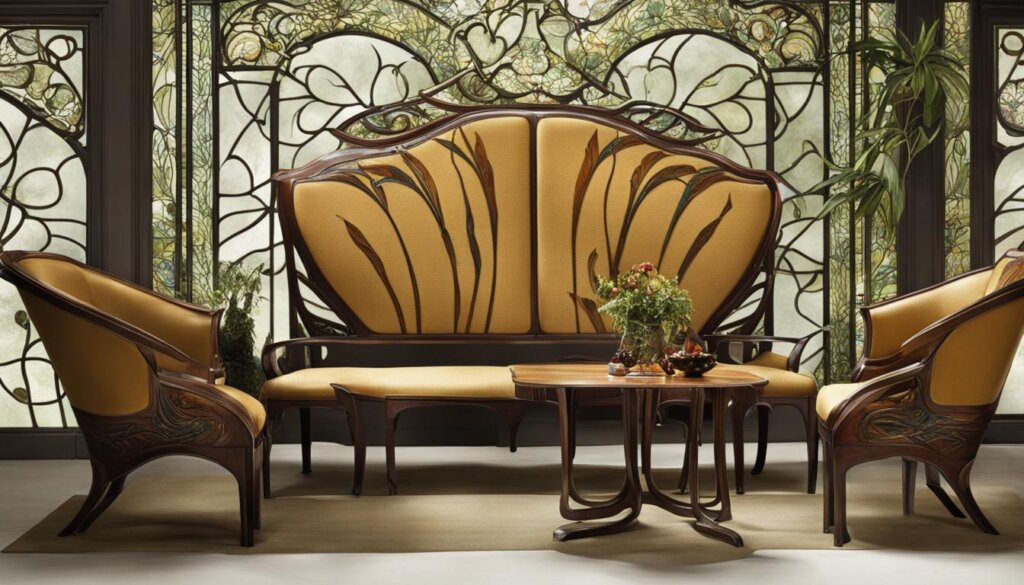
High-quality materials and expert craftsmanship are hallmarks of Art Nouveau furniture. With an emphasis on durability and visual appeal, these pieces stand the test of time while adding elegance to any space.
Organic forms and ornamentation play a prominent role in Art Nouveau furniture and fixtures. Flowing lines, floral motifs, and stylized natural elements such as leaves and vines are integrated into the design, creating a harmonious blend of art and nature.
Accessories and Décor in Art Nouveau Design
Art Nouveau spaces are characterized by their attention to detail, and carefully chosen accessories and décor items play a vital role in enhancing the overall aesthetic. These elements complement the elegant furniture and fixtures, creating a harmonious and visually appealing environment.
One of the distinctive features of Art Nouveau design is the use of organic shapes and natural motifs in accessories and décor. These elements reflect the movement’s celebration of the beauty of nature. From flowing floral patterns to intricate vine-like designs, these organic shapes add a touch of elegance and sophistication to the space.
Artwork and wall décor play a significant role in Art Nouveau interiors. Natural scenes, botanical illustrations, and sculptural wall art are commonly featured, adding an immersive and dynamic element to the space. These pieces often depict the beauty of nature, evoking a sense of tranquility and harmony.
Lighting is another essential aspect of Art Nouveau design. Chandeliers, sconces, and table lamps are crafted with organic shapes and adorned with glass accents, creating a warm and inviting ambiance. These unique lighting fixtures not only provide illumination but also serve as stunning decorative elements that enhance the overall aesthetic.
Art Nouveau design embraces the use of decorative objects to enhance the overall ambiance of the space. Vases, sculptures, and mirrors showcasing organic forms and intricate detailing are often incorporated. These pieces add visual interest and serve as focal points, reflecting the movement’s attention to craftsmanship and refined aesthetics.
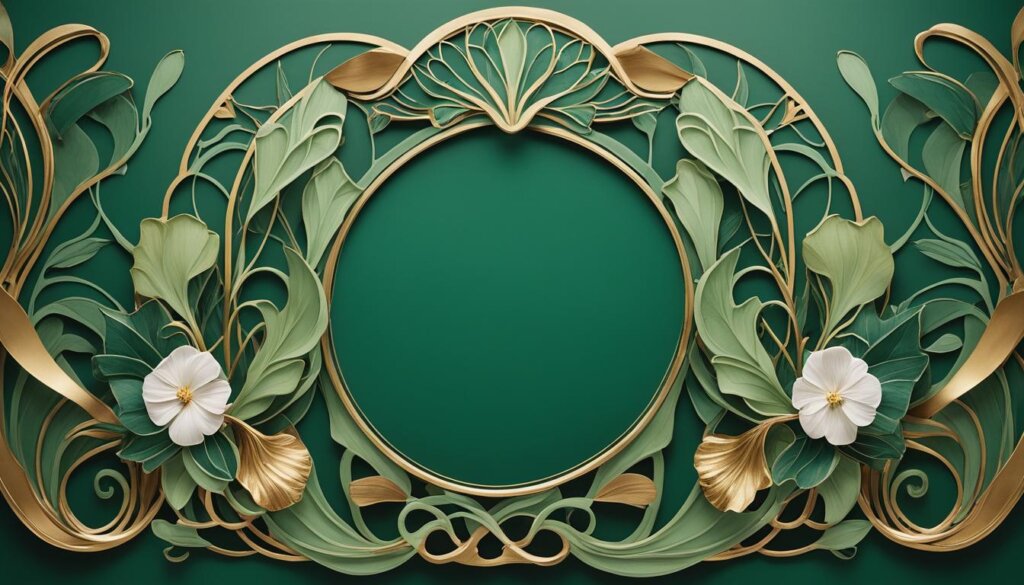
Applying Art Nouveau Design Principles to Different Rooms
Art Nouveau design principles can be applied to various rooms within a home, creating cohesive and elegant living environments. Let’s explore how Art Nouveau style can be incorporated into different spaces, from the living room to the bathroom.
Living Room
In the living room, Art Nouveau design often features fluidly shaped seating that embraces organic forms. Think about incorporating curvaceous sofas and chairs with smooth lines. Complement the seating with organically inspired coffee and side tables, featuring intricate patterns and elegant textures. To enhance the Art Nouveau ambiance, consider displaying artwork that showcases natural motifs and harmonious colors. This will create a visually captivating and comfortable living space.
Bedroom
The bedroom is a space where Art Nouveau design can make a statement. Consider a gracefully curved headboard or an organically designed bed frame as the centerpiece of the room. Add sinuous-shaped furniture pieces like nightstands and dressers to enhance the overall aesthetic. To create a warm and inviting atmosphere, choose statement lighting fixtures with ornate designs and soft lighting. These elements will bring a sense of elegance and tranquility to your Art Nouveau-inspired bedroom.
Kitchen
Art Nouveau design can be incorporated into the kitchen by combining flowing lines and organic patterns with modern functionality. Opt for materials like wood and granite to create a natural and warm ambiance. Consider using patterned tiles or wallpaper as accents, highlighting the visual appeal of the space. Incorporate decorative elements such as delicate glassware and ceramics with intricate patterns to further enhance the Art Nouveau style. The kitchen will become a harmonious and welcoming space that celebrates nature’s beauty.
Bathroom
In the bathroom, Art Nouveau design can create a sense of grace and elegance. Incorporate opulent materials like ceramic, glass, and wrought iron to elevate the aesthetic. Choose fixtures with organic shapes and polished finishes to enhance the natural-inspired ambiance. Decorate the bathroom with art pieces that feature flowing lines and delicate botanical illustrations. By combining these elements, your bathroom will become a luxurious sanctuary that embraces the timeless elegance of Art Nouveau design.
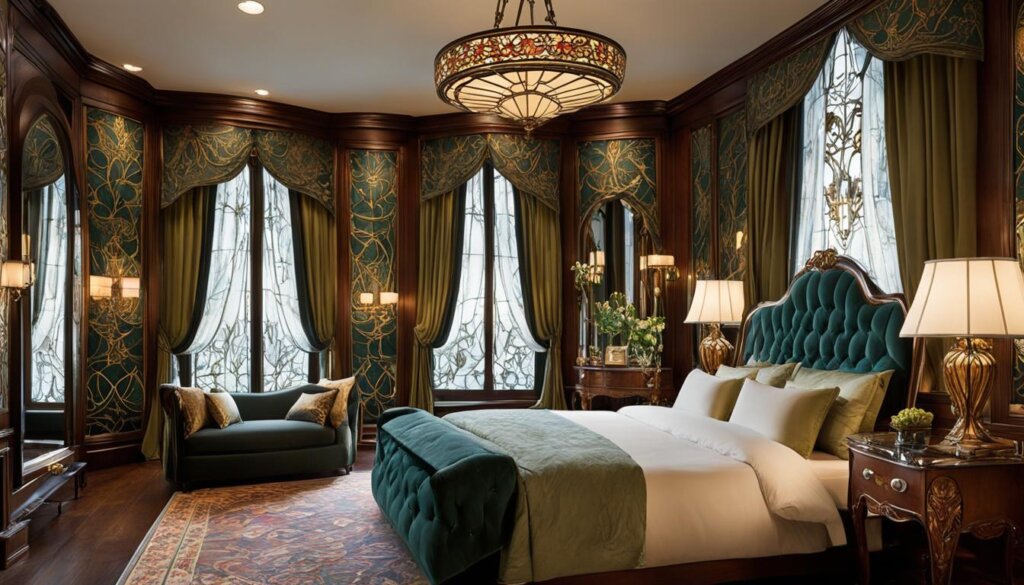
Art Nouveau design principles can be adapted and applied to different rooms, transforming your living space into a harmonious and visually captivating environment. Whether it’s the living room, bedroom, kitchen, or bathroom, Art Nouveau design allows you to celebrate the beauty of nature and create a unique and elegant ambiance.
Popularity and Enduring Appeal of Art Nouveau Design
The enduring popularity of Art Nouveau design can be attributed to its timeless and visually appealing aesthetic. With its emphasis on natural inspiration, craftsmanship, and harmony, Art Nouveau design offers a unique and enduring approach to creating harmonious, elegant, and visually appealing living spaces.
The style’s versatility allows it to be applied to various living spaces, from urban apartments to historic homes. Whether it’s an Art Nouveau-inspired living room, bedroom, kitchen, or bathroom, the design principles can transform any interior into a work of art.
The enduring appeal of Art Nouveau design is also due to the movement’s emphasis on craftsmanship and attention to detail. Every piece of Art Nouveau furniture, fixture, and accessory is a testament to the skill and dedication of the artisans who created them. The intricate ornamentation, organic forms, and delicate craftsmanship make Art Nouveau creations highly sought after and admired.
At the heart of Art Nouveau design is a celebration of the inherent beauty of nature. Inspired by the natural world, Art Nouveau incorporates organic forms, flowing lines, and intricate natural motifs. This connection to nature resonates with individuals who appreciate the elegance and artistry found in the natural world.
Whether it’s the sinuous curves of a vase, the delicate details of a stained glass window, or the graceful lines of a chair, Art Nouveau design captures the essence of natural beauty in every element.
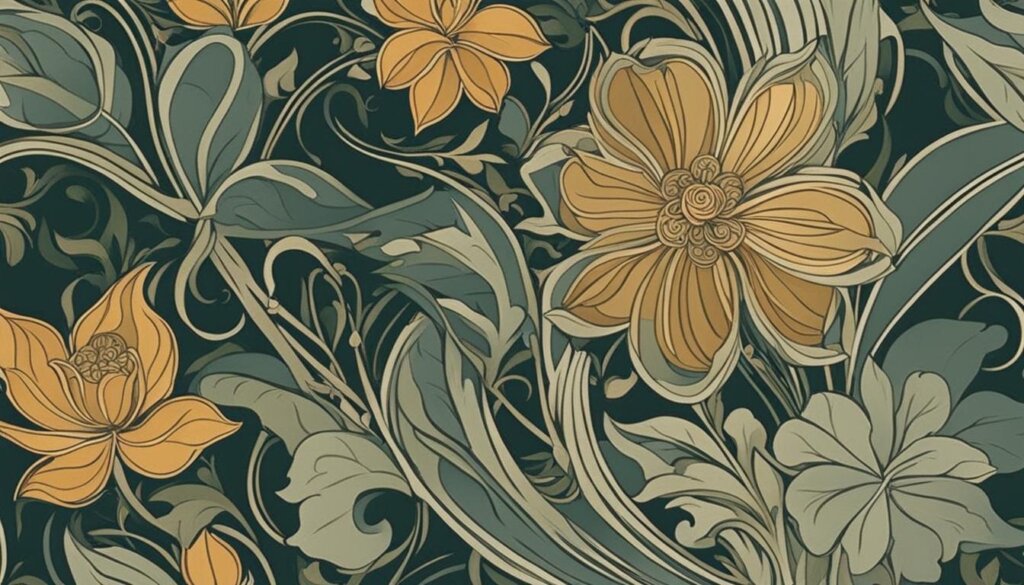
The enduring popularity of Art Nouveau design is a testament to its ability to create timeless, harmonious, and visually captivating living spaces. The natural inspiration, emphasis on craftsmanship, and celebration of the beauty of nature combine to make Art Nouveau design a truly enduring and cherished aesthetic.
The Beauty of Nature in Art Nouveau Design
Art Nouveau design captivates with its celebration of the beauty of nature, seamlessly incorporating natural motifs and organic forms into its aesthetic. This artistic movement exquisitely showcases the soft curls, undulating shapes, and intricate patterns found in the natural world. By embracing the inherent allure of nature, Art Nouveau design creates harmonious and elegant living spaces that resonate with both our senses and our souls.
With its emphasis on organic forms and flowing lines, Art Nouveau design exemplifies the elegance and sophistication inherent in nature. Every element within this style, from furniture to architecture, incorporates the graceful curves and intricate ornamentation found in the natural world. The play of light and shadow, reminiscent of sunlight filtering through foliage, adds an ethereal quality to Art Nouveau interiors.
Art Nouveau design cherishes the beauty of nature, seeking to bring its timeless appeal into every aspect of our lives. From the delicate petals of a flower to the delicate wings of a butterfly, natural motifs infuse Art Nouveau creations with a sense of harmony and tranquility. This aesthetic merges the delicate balance between the complexity and simplicity found in the natural world, creating spaces that evoke a deep sense of serenity and rejuvenation.
Step into the world of Art Nouveau design and immerse yourself in the sublime beauty of nature. Experience the exquisite elegance and captivating allure of organic forms, flowing lines, and intricate details that celebrate the wonder and majesty of the natural world. Let Art Nouveau design inspire you to create living spaces that embody the harmony, grace, and timelessness that can only be found in nature.
Source Links
- https://www.linkedin.com/pulse/art-nouveau-embracing-grace-nature-curves-timeless-elegance
- https://enchantedlivingmagazine.com/ways-to-embrace-an-art-nouveau-aesthetic/
- https://www.proantic.com/antiques-art-design-magazine/art-nouveau-taking-inspiration-from-the-beauty-of-nature/
